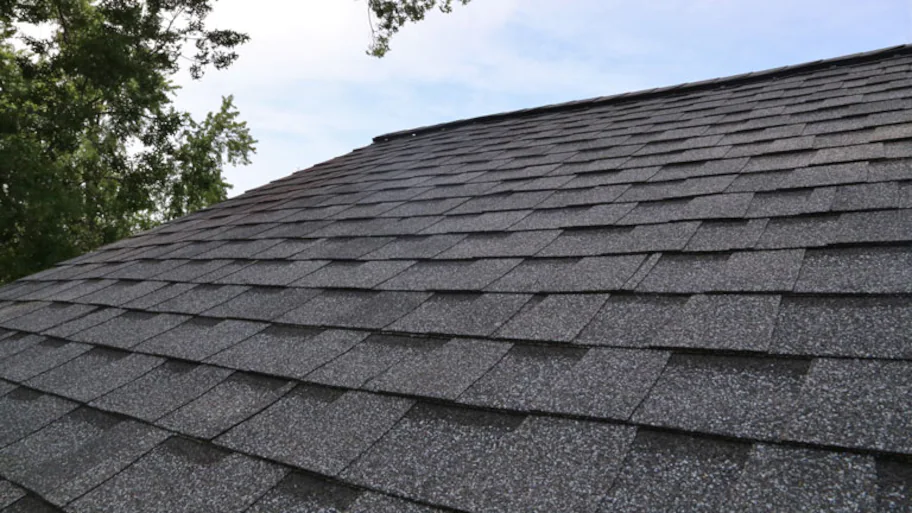Local Insights on Roofing Companies Gainesville Florida Homeowners Prefer
Local Insights on Roofing Companies Gainesville Florida Homeowners Prefer
Blog Article
Finest Practices for Ensuring Appropriate Roof Covering Air Flow
A well balanced consumption and exhaust air vent ratio, typically 1:300, plays an essential role, with consumption vents preferably positioned at the reduced side of the roof for great air access and exhaust vents at the optimal for warm air exit. Maintaining insulation away from vents is critical to protect against air flow constraint.
Understand Ventilation Basics
Properly understanding air flow fundamentals is crucial for making sure the durability and performance of roofing systems. Efficient air flow reduces wetness build-up and temperature level extremes in the attic room, both of which can cause significant architectural damages over time. A well-ventilated roof covering aids in protecting against typical issues such as mold growth, wood rot, and ice dams, which can endanger the integrity of the roof covering products and the underlying structures.
The key objective of air flow is to assist in the motion of air, enabling a regular exchange between the interior and outdoor environments. This balance is achieved with a mix of consumption and exhaust vents that collaborate to keep optimum air flow. Intake vents, usually situated along the eaves or soffits, allow fresh air to go into the attic room, while exhaust vents, often located at or near the roofing system ridge, enable warm, damp air to escape.
Trick variables influencing the efficiency of roofing air flow include appropriate placement, ample sizing, and ensuring that both consumption and exhaust vents are unhampered. Regular examination and upkeep are vital to determine possible obstructions, damages, or inadequacies in the ventilation system, thereby safeguarding the roof's efficiency and toughness.
Kinds Of Roofing Vents
Roof covering vents play an important role in preserving efficient attic ventilation and, by expansion, the general health of the roof covering system. Various sorts of roofing vents are offered, each with unique advantages tailored to details roof covering demands. Ridge vents, as an example, are mounted along the roofing system's top, allowing cozy, humid air to run away from the attic room. They offer continual air flow and blend perfectly with the roofline, making them both efficient and cosmetically pleasing.

Soffit vents are mounted under the eaves and job in tandem with roof vents to ensure a balanced intake and exhaust system. By enabling cooler air to go into from below, soffit vents promote the expulsion of hot air through upper vents. Gable vents, situated on the outside walls of the attic room, offer another efficient service, specifically in homes with saddleback roofs.
Evaluate Your Present Air Flow

Following, take into consideration the age and condition of your roof products and ventilation parts. Older systems might not follow current building regulations or might have worn away with time, minimizing their effectiveness. Conduct a comprehensive assessment to recognize any kind of indications of deterioration, such as rust, damage, or gaps that might compromise the system's performance.
In addition, measure the attic room temperature level and moisture levels. High temperature levels and moisture can indicate insufficient ventilation.
Setup Best Practices
Reliable installation of roofing ventilation systems is paramount for making sure optimal efficiency and durability. Proper installment starts with recognizing the specific ventilation demands of the building and the roofing it covers. This includes determining the right ratio of intake to exhaust vents, typically adhering to the 1:300 policy, which specifies one square foot of ventilation for each 300 square feet of attic flooring area.

The positioning of vents is similarly important. Consumption vents should be installed at the roofing's reduced edge, typically in the soffits, to permit great air to get in. Exhaust vents, on the other hand, need to be installed near or at the roof's peak to promote the departure of cozy, moist air. This develops a natural air movement that helps preserve temperature level and wetness balance within the look here attic room room.
Seal all vent connections carefully to stop air leakages and prospective water seepage. Use premium materials and adhere to supplier guidelines to guarantee resilience and effectiveness. In addition, integrating ridge vents with baffles can substantially enhance airflow performance by stopping wind-driven rainfall and snow from going into the attic.
Inevitably, accurate installment of roof ventilation systems mitigates prospective problems such as mold growth, ice dams, and architectural damages, ensuring the roofing's stability and the building's general wellness.
Routine Maintenance Tips
Uniformity in upkeep practices is fundamental to guaranteeing the long-lasting performance of roof covering ventilation systems. Routine examinations are vital, preferably performed biannually-- in the spring and autumn. During these inspections, guarantee that vents are complimentary of debris, nests, and various other blockages that might hamper airflow. Check for any indicators of moisture accumulation or mold, as these can show inappropriate ventilation or leakages (roofing companies in gainesville florida).
Cleansing the vents is an additional necessary task. Utilize a soft brush or a vacuum cleaner to get rid of dirt and particles from intake and exhaust vents. Beware not to damage the air vent screens or louvers during the procedure. Additionally, inspect the attic area for any indications of water damages, which might endanger the integrity of the roof.
Correct insulation is similarly important. Ensure that attic insulation does not block the vents, as this can seriously limit air flow. If any kind of insulation has actually moved or resolved, reposition or replace it to preserve an efficient barrier.
Lastly, change any kind of damaged or missing out on components immediately. Busted vents, split roof shingles, or shabby flashing can all contribute to inadequate ventilation and ought to be dealt with right away. Normal maintenance ensures that the roof ventilation system functions ideally, therefore expanding the life-span of the roof covering itself.
Final Thought
Making certain appropriate roof ventilation is vital for maintaining the efficiency and sturdiness of a roof system. Adherence to the 1:300 consumption and exhaust vent ratio, paired with the calculated placement of vents, is necessary.
A balanced consumption and exhaust vent ratio, commonly 1:300, plays you can look here an essential duty, with intake vents ideally placed at the reduced side of the roof for amazing air entry and exhaust vents at the top for warm air leave. Intake vents, generally located along the eaves or soffits, enable fresh air to get in the attic room, while exhaust vents, frequently located at or near the roofing ridge, make it possible for hot, damp air to escape.
Soffit vents are installed under the eaves and job in tandem with roof vents to make sure a balanced see consumption and exhaust system. By permitting cooler air to go into from below, soffit vents facilitate the expulsion of warm air through upper vents. Adherence to the 1:300 consumption and exhaust vent ratio, combined with the critical positioning of vents, is vital.
Report this page